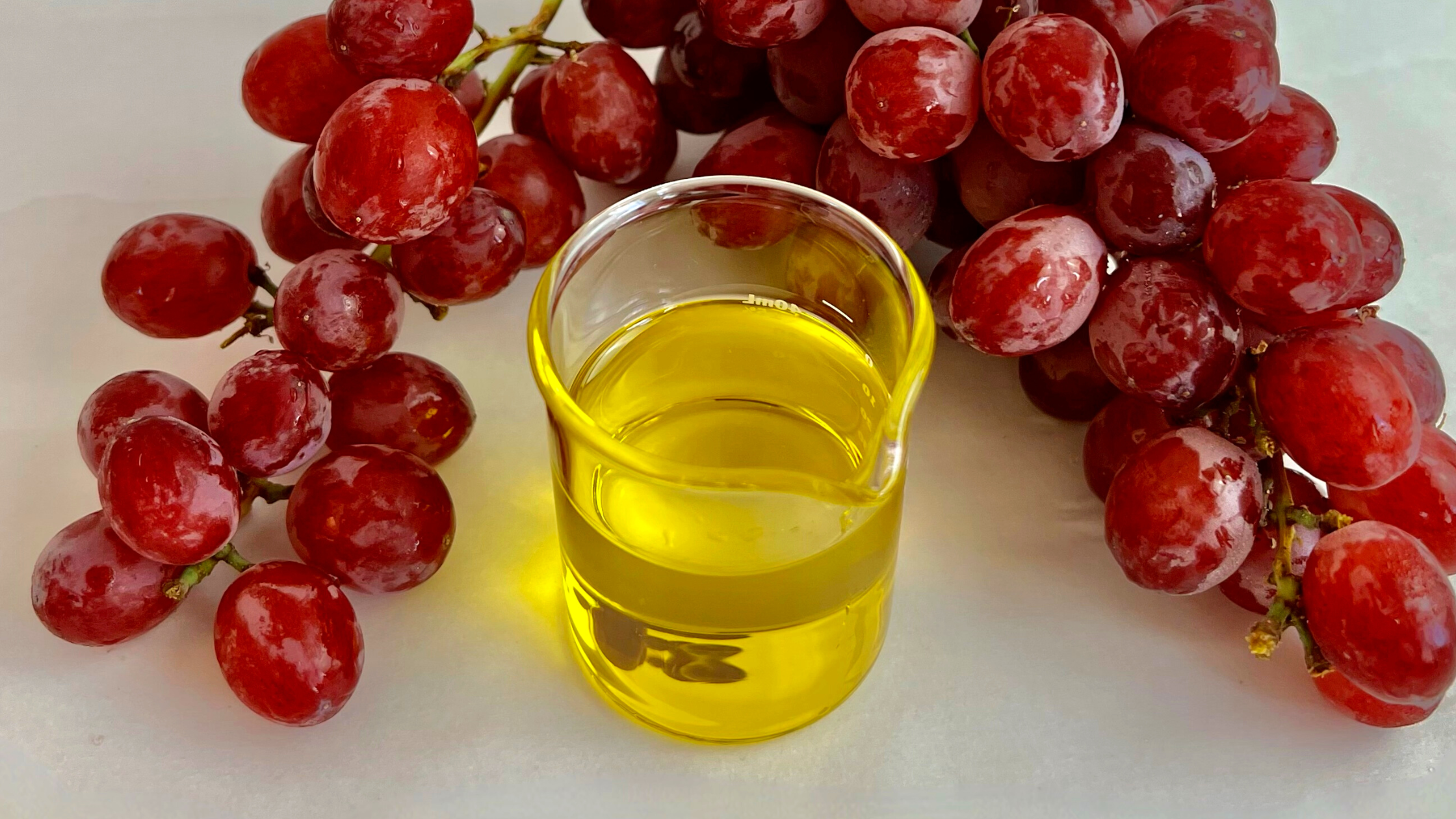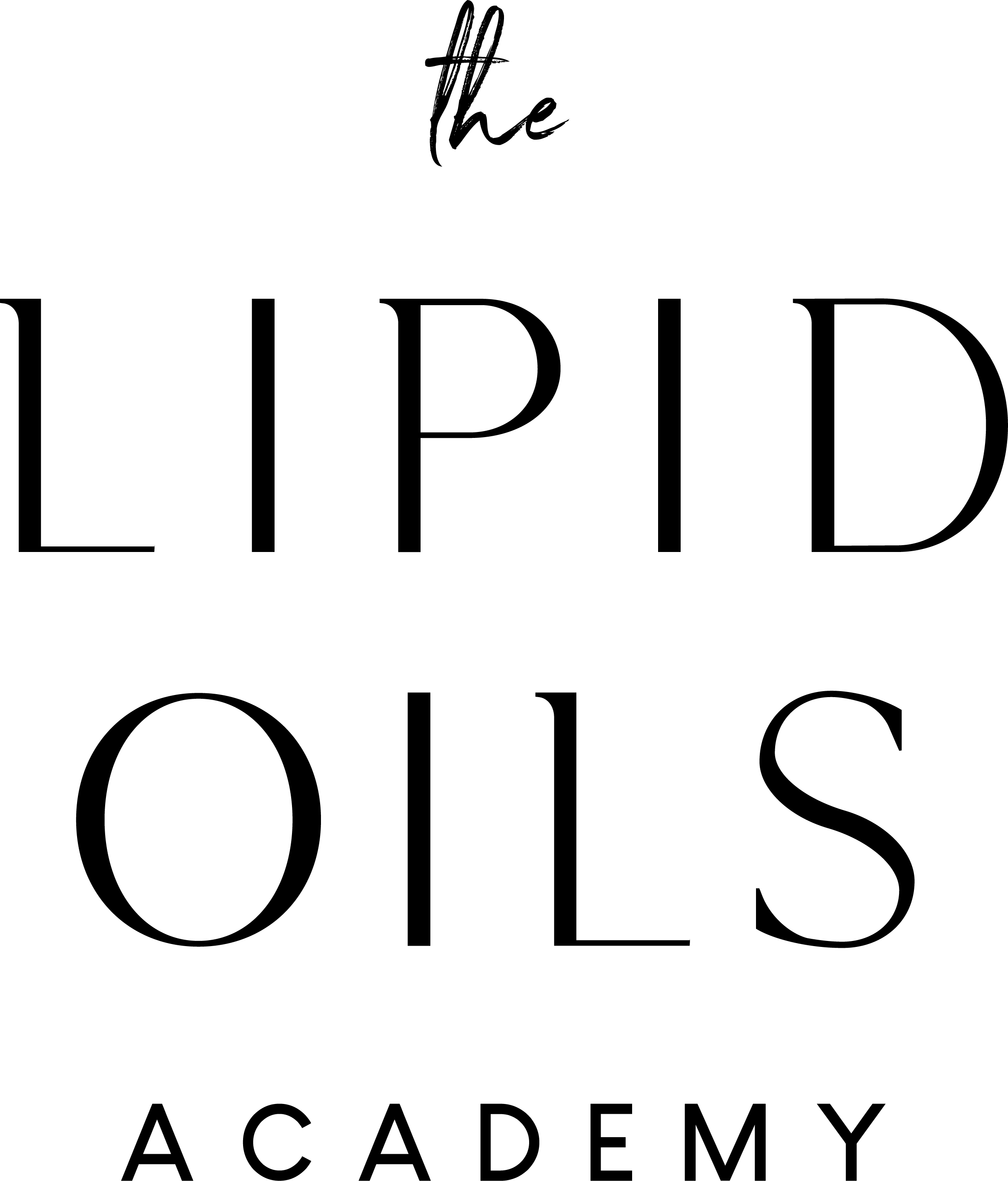The four factors that impact the shelf life of a carrier oil are: time, temperature, light and air.
Control as many of these four factors as possible, and you can extend the shelf life of your carrier oils.
First, let’s look at the oils most prone to going off rapidly. These are the polyunsaturated oils, like grapeseed oil or evening primrose oil, hemp seed oil and flax seed oil. The reason is that these polyunsaturated oils go off more quickly is due to their fatty acid structure.
Oxidation Over Time
Polyunsaturated oils have places on the carbon chain where hydrogen atoms are absent and oxygen can attach. And, when oxygen attaches to the chain, it oxidizes, causing the oils to become rancid. As oil oxidizes, it will start to smell off and eventually, the oil will begin to dry.
Note: for more on Polyunsaturated Fatty Acids (PUFA's) click here
You might have found this when picking up a bottle of grape seed oil that’s been near the stove for a while. Instead of feeling oily and slippery, it may have felt sticky or tacky where any oil dripped down the bottle.
This is oil oxidizing, and slowly drying to the touch.
Storing Polyunsaturated Oils
Store oils in a cool, dark place. This is good practice for all oils but is especially important for the polyunsaturated oils. Brown bottles also help keep light out which can help extend shelf life. These oils typically have a shelf life of six to 18 months with careful handling.
Here’s a few more examples of polyunsaturated oils that need extra care to keep them fresh longer: rose hip seed oil, walnut oil, safflower oil, soy bean oil, borage seed oil, and grapeseed oil.

Exceptions to the Rule
But as usual, there are exceptions when working with natural materials. Two factors impact the shelf life of polyunsaturated oils. One is the antioxidant compounds that occur naturally in many oils, and the other is the specific fatty acid makeup of some polyunsaturated oils.
Antioxidants
Polyunsaturated oils that contain high amounts of antioxidants hold up better than those without. The antioxidants help prevent oxidation in the oil. And since it is oxidation that causes rancidity, this protection helps prolong the life of an oil. And some oils like raspberry are so loaded with antioxidants that they help to preserve the oil longer than it would normally last without them.

Fatty acid make up
Another factor is the total fatty acid make up of the oil. For the longest time I didn’t understand why camelina oil, a northern seed crop high in omega 3 polyunsaturated fatty acids could have a two year shelf life unrefrigerated! That is what the producers and the literature said. Flax seed oil with a similar amount of omega 3’s is sold in black bottles in refrigerators. What gives, I kept asking myself.
It wasn’t until I was researching for my program Lipids Decoded and making up lots of pie charts of many different oils for the course that the reason became clear to me.
Camelina is a member of the cabbage family known for its especially long fatty acids, twenty carbons and higher. The minor percentage of very long chains in camelina oil is able to protect the shorter omega 3 fatty acids thus prolong its shelf life!
Flax doesn’t have these protective fatty acids and so is very sensitive to going off.
Saturated Oils and Monounsaturated Oils
The most stable oils are the saturated oils – these are the butters that are solid at room temperature – because they have more hydrogen attached to their carbon chains and so fewer places for oxygen to attach. Next are the monounsaturated oils like olive, almond or avocado and their shelf life falls between the polyunsaturated and the solid butters.

Working with Botanical Lipid Oils
Adding antioxidants will help stave off the inevitable process. That’s why a few drops of vitamin E oil will help preserve an oil or oil based product. The vitamin E oil is packed with concentrated antioxidants that help protect.
You can also add meadowfoam seed oil.
Meadowfoam seed oil is liquid at room temperature – meaning it is unsaturated – but it has exceptionally long fatty acid chains and can naturally extend the shelf life of other oils in a blend. So if you are using a lot of grapeseed oil, rosehip seed oil and other less stable oils, add some meadowfoam oil to your blend to stabilize it.
Heating Delicate Oils for Salves
There is no single temperature that turns an oil rancid. Rather it is heat and light over time as well as exposure to the air that causes oxidation and eventually rancidity.
When working with the polyunsaturated oils to make salves, keep the time that they are heated as short as possible. Start a salve by melting waxes and any butters and other saturated oils, and then add the polyunsaturated oils last so they don’t get overly heated.
No Hard and Fast Rules
I like to bring a certain amount of intuition into play when I’m working with oils. For example, an oil that is over a year old but should only have a one year shelf life isn’t necessarily bad if it has been stored in a cool cupboard and never opened, it is most likely fine. An exception would be hemp or flax, which do go off.
Because oxygen is a major factor in triggering rancidity, an unopened oil that hasn’t been exposed to air (oxygen) and has been in a dark place away from excess heat will probably be fine past the designated shelf life date. Open it up when you’re ready to use it, smell it, and feel the texture of the oil. You can even taste it on the tip of your tongue, rancid oil is a particular bitter funky taste.
With so many variables, it can seem like a guessing game at first, but as you get to know the oils and the components that make up each one, you’ll start seeing these different patterns. The oils are all made up of a unique combination of fatty acids in different proportions — this contributes to the structure of the oil — and the healing factors, the antioxidants and other plant compounds within the oil.
And so, shelf life is a variable process and will always depend on both external factors of time, light, heat and air as well as the oil’s inherent nature and fatty acid make up.
Carrier oil shelf life might seem like a dry subject but once we dig into it, it’s a wonderful way to explore how different oils react to their environment.
Questions about carrier oil shelf life? Leave a comment below.

Do you have a printable chart for carrier oils & their shelf life?
I have started creating my skin products using essential oils & have seen that some carrier oils’ shelf life is longer than others. Can you help me out with this… or point me in the right direction? Thanks
Hi Jojo, How long an oil last depends on many factors one being how it is stored along with its structure. I recommend you download our guide in which we discuss the different groups of oils along with how best to store all oils. No list would be accurate with so many factors involved. It is free, and will answer your basic questions.
In the response below dated 5/18/2023 can you clarify the Vit E percentage for the longer known shelf lives, is it “closer to 4%” or “closer to 0.4%”? Thank you.
Hi Carol, yes the vitamin E added should be in the range of 0.4% up to possibly 1% is sufficient and will not cause increased oxidation.
Thank you very much for making all of this free.
I would like to treat my oils when I receive them with vitamin E. Is there a rule of thumb for how much vitamin E to add per ounce of oil? I just received some new rosehip oil.
Actually yes! More is not more with this antioxidant as too much can promote rancidity. Oils with shorter shelf lives usually do well with a Vit E percentage up to .8% (not quite one percent).. And oils with longer known shelf lives tend to do better with a Vit E percentage closer to.4%. This data was shared with me years ago by a couple of professional cosmetic chemists. I will try to find my original source. Also, do not use Vit. E acetate as that is a skin emollient, not an antioxidant. Vit E antioxidant (Tocopherol) is for sale in formulator shops (not drug stores)
Thanks, Susan!
Wow thanks so much for this wonderful teaching and i think its basic lesion for the one who working on this area…..thanks so much God bless you